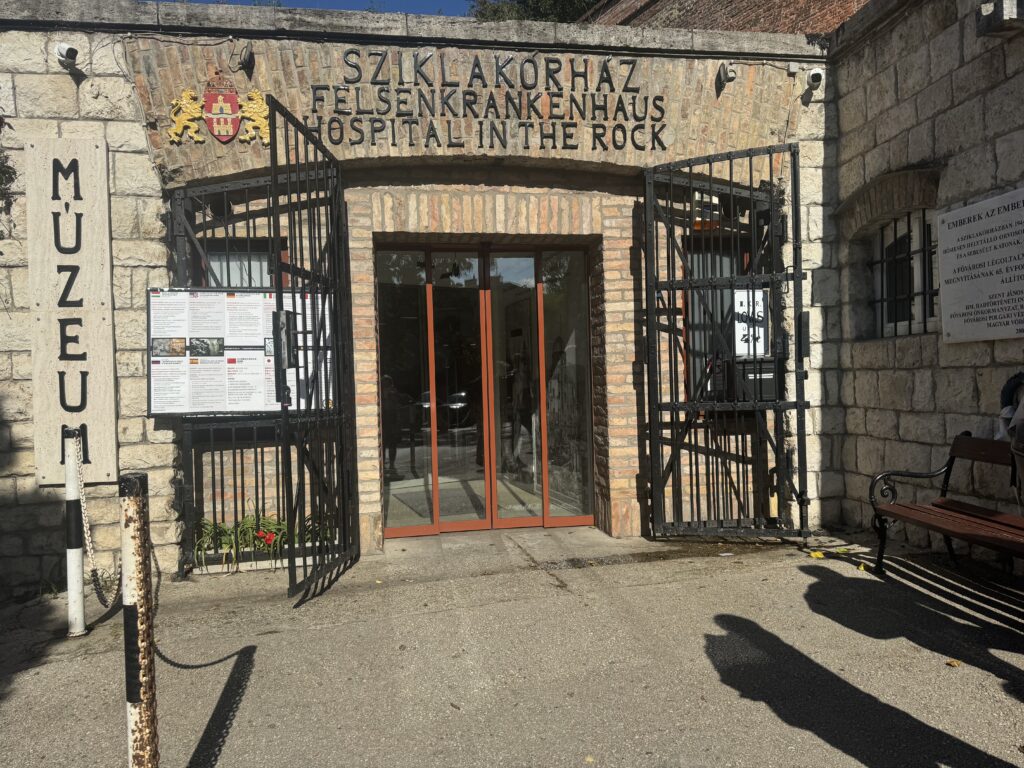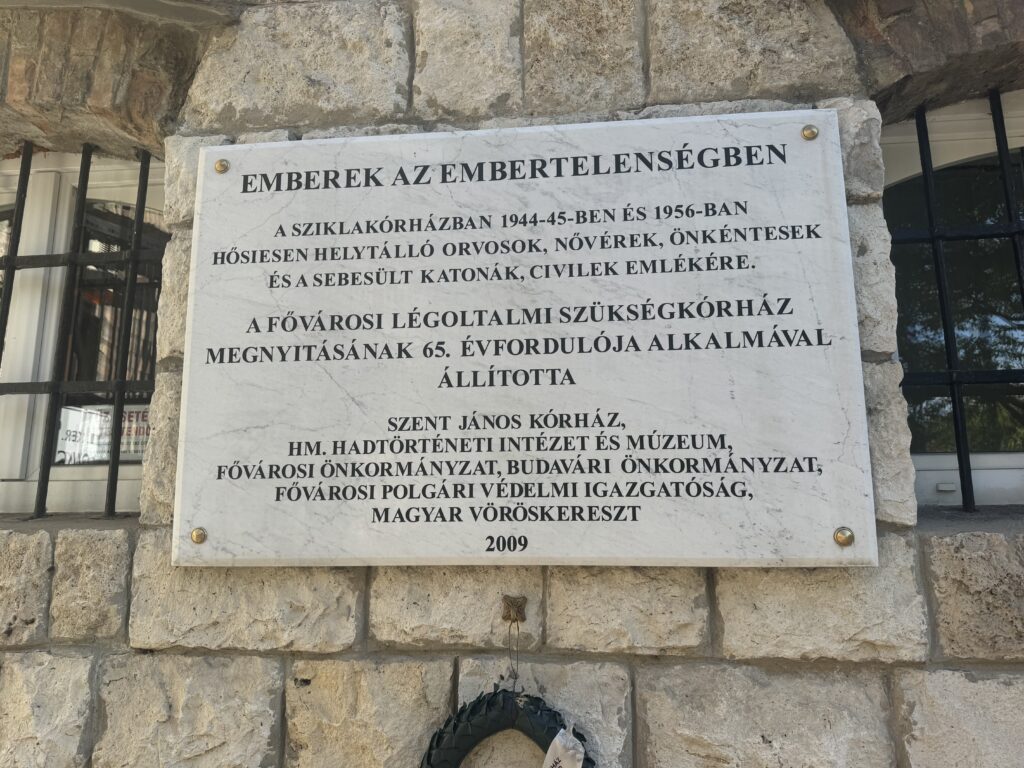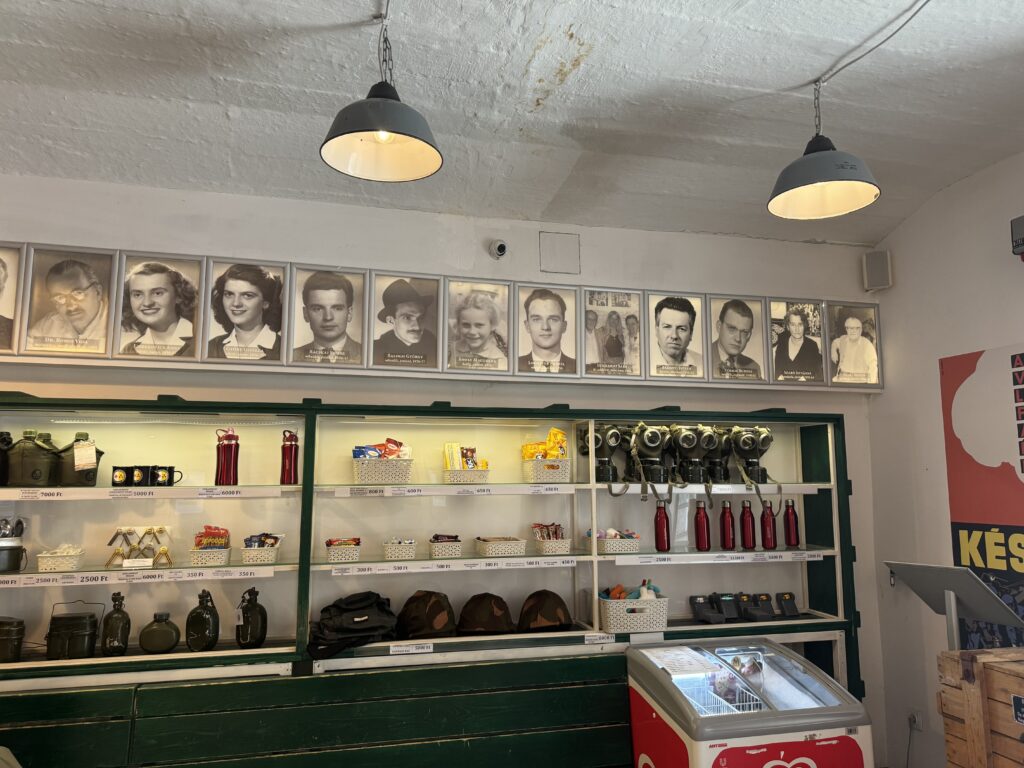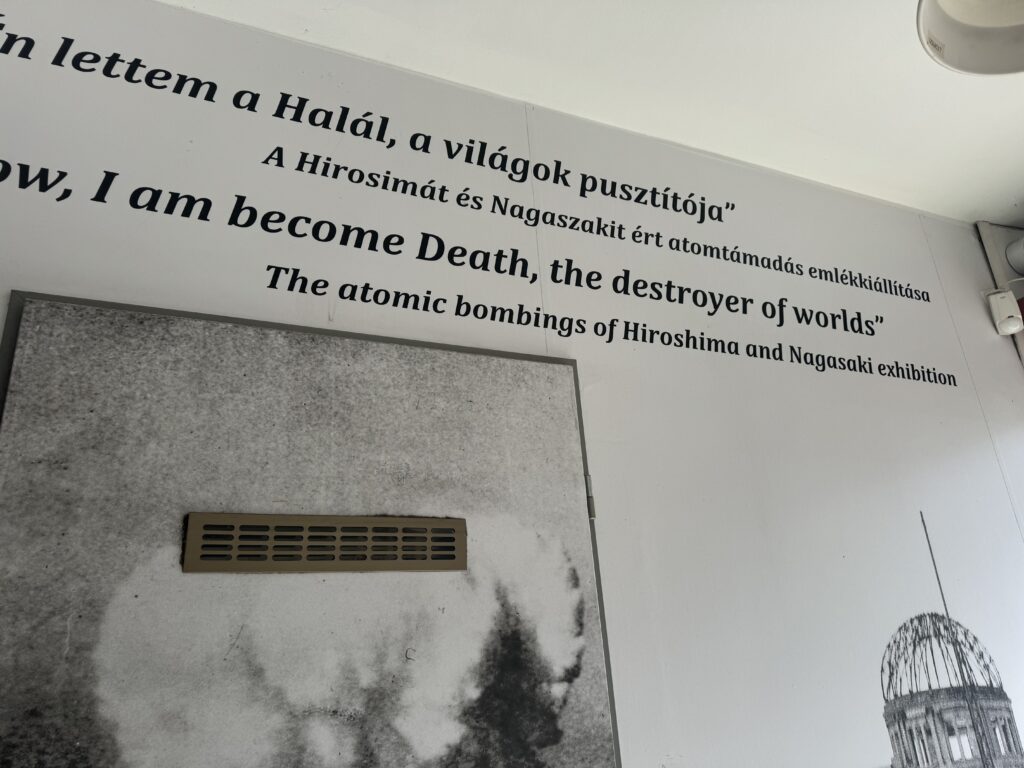Impressions on Hospital in the Rock 9-29-24
I had just gotten through with seeing Buda Castle and Fisherman’s Bastion in Budapest “on the rock” just like most of the other tourists who joined me to see Hospital in the Rock, which is nestled into a cave in the side of “the rock.” I descended a long flight of stairs to get to it, and you can see its entrance here:

Please note this is the only thing I was allowed to photograph as photographs were not allowed inside of the tour.
The group of English-speaking tourists all gathered together in a dark room ready to watch a short video presentation to prepare us for a walk-through Hospital in the Rock, which is a nuclear bunker museum, which is within the cavers under the Buda Castle built in the 1930s in preparation of the 2nd World War to protect Budapest’s and other people.
Those seeking assistance for injuries sustained in the air attacks are met with state-of-the-art operating rooms, wards, and equipment. Originally designed to house 60 patients, the hospital’s capacity was swiftly expanded to 200 and at one point after the siege of Budapest, the occupancy surged to 650 patients. From a medical and technical standpoint, it was state of the art. It had two power generators, emergency treatment rooms, surgery rooms, and an X-ray equipment. The adjacent St. John’s Hospital was in charge of staffing and supply management. With the assistance of two dozen other physicians, some of whom were engaged in forced labor, Dr. Istavan Kavacs was appointed director. The personnel was augmented by Red Cross nurses and volunteers, many of whom were members of the nobility. In 1958 Cuban Missile Crisis, a safety pass airlock gates, emergency exist and gas filtration system was built and deployed. The cold war resulted in a costly upgrade of the facility against chemical and nuclear attack.
Some things reported by the guide:
It was nearly impossible to treat almost 650-700 patients closely stacked, and severely injured during the siege. The doctors and nurses could barely stand and get to people. Patients being treated unfortunately had their beds within inches of the next patient, on all sides on the floor. There was a room with bunk beds for 30 beds and they talked about how they were in short supply of bandages, so they would take them off deceased patients and put them on living patients, which resulted in a large amount of infection. He said that there were lots of volunteers, and that he thought the doctors and nurses were like saints doing thanklessly what they were doing. He said that the facility treated both Hungarians and Soviets, and that this fact wasn’t looked well upon after the siege taken over by Soviet control that they also treated Hungarians here – so providers of care were blacklisted or given the worst jobs for caring for the Hungarians as well. But it was a human-centered decision, to care for everyone. In their minds (the Hungarians), it was very kind and humane to save lives of the enemies (the Soviets).
In the surgical suite, the guide pointed out that 2 patients were operated on at the same time as they had to be willing to take the infection risk due to the emergency state. He described a boot used to correct a broken ankle or foot and set it back in place through manipulation, he said all they had was laudanum for numbing which didn’t work that well.
He talked about a man that was the director of the facility and how he could write that Hungarians were a part of the Red Cross allowing them to walk around and get things done. It is assumed that he saved 1000s of people doing this.

The facility brought fuel to the bunker during summer months by acting like they were watering grass, but they were really filling their fuel tanks. During winter this was harder to do, he said, so they used milk trucks as a disguise to do the same.

In the final rooms of the tour, there was an educational area which showed the fallout of the nuclear bombs on a map and then discussed the effect that the atomic bombs had on people hit and showed artifacts left behind by victims, confirming their death for their families. He discussed that 3 babies were born in the facility, and that one came to the grand opening ceremony in 2008. The last room was devoted to a woman who had survived the initial nuclear bomb but then later got leukemia from exposure, like many, and she believed which was customary that if she made 1000 cranes that she would be saved. The room contained 1000 of such cranes hanging from the ceiling and showed a tribute to her and a monument that was built of her holding a crane above her head in Japan. It was a tearful way to depart the facility, but our guide assured us that this place was meant to save people, to help and aid people.

#hospitalintherock